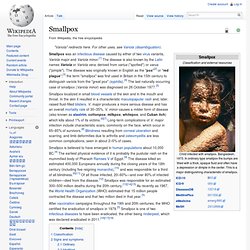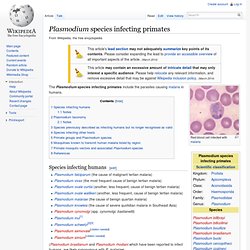

A system for classifying natural enemies. Step one on the race to my qualifying exams: Know your definitions!

The first paper on my reading list is Trophic strategies, animal diversity and body size by Kevin Lafferty and Armand Kuris from 2002. This paper creates a framework for categorizing “natural enemies” (organisms that obtain their energy by taking it from other organisms). The categories that first come to mind are predators and parasites, but many organisms do not neatly fit into these groupings. Lampreys attacking a lake trout For example, how do you categorize a lamprey?
Lafferty and Kuris (2002) propose a useful system for categorizing natural enemies based on a set of 4 dichotomous questions. Here are the dichotomous questions that they posed and the categories that arise as answers: 1) Does the natural enemy attack one or many individuals during its lifetime? Predators typically attack more than one prey individual over the course of their lives.
OK, nothing surprising here. Who cares? Like this: Like Loading... Ancient Diseases of Human Ancestors. I’ve written before about ancient diseases of the ice age, but this time I’m going even further back in time, to diseases that were present in the first human-like hominids.

Although many human infections only developed after human settlements and animal domistication, early human ancestors would still have been fighting off bacteria and other nasty diseases. Some of these diseases are still around today. So how do you start exploring the age of bacteria, and trying to discover when they developed as a human-infecting species? One way to look for the age and relatedness of strains is by looking at the bacterial DNA and examining the rate of mutations that cause very small differences between bacterial strains (single nucleotide polymorphism – shown in the image below).
Image by David Hall (Gringer). The disease leprosy, caused by Mycobacteria leprae, has recently undergone this analysis and raised some interesting questions about its origins and spread. Disease Eradication — History of Vaccines. When a disease stops circulating in a region, it’s considered eliminated in that region.

Polio, for example, was eliminated in the United States by 1979 after widespread vaccination efforts. If a particular disease is eliminated worldwide, it’s considered eradicated. To date, only one infectious disease that affects humans has been eradicated. In 1980, after decades of efforts by the World Health Organization, the World Health Assembly endorsed a statement declaring smallpox eradicated. Review Michael Behe Edge of Evolution. A review of The Edge of Evolution: The Search for the Limits of Darwinism by Michael J.

Behe Free Press, New York, NY, 2007 reviewed by Don Batten Article from:Journal of Creation22(1):28-33April 2008 This new book by Michael Behe, a follow-up to Darwin’s Black Box (DBB), has created somewhat of a storm amongst the faithful defenders of Darwin such as Richard Dawkins, Jerry Coyne and Kenneth Miller. They came out with all guns blazing to try to destroy the credibility of this book, presumably hoping that their dismissive vitriol would cause potential readers to skip reading it. Smallpox. Smallpox localized in small blood vessels of the skin and in the mouth and throat.

In the skin it resulted in a characteristic maculopapular rash and, later, raised fluid-filled blisters. V. major produces a more serious disease and has an overall mortality rate of 30–35%. V. minor causes a milder form of disease (also known as alastrim, cottonpox, milkpox, whitepox, and Cuban itch) which kills about 1% of its victims.[6][7] Long-term complications of V. major infection include characteristic scars, commonly on the face, which occur in 65–85% of survivors.[8] Blindness resulting from corneal ulceration and scarring, and limb deformities due to arthritis and osteomyelitis are less common complications, seen in about 2–5% of cases. Classification There were two clinical forms of smallpox.
2233.full. Plasmodium species infecting primates. Red blood cell infected with malaria The Plasmodium species infecting primates include the parasites causing malaria in humans.

Species infecting humans[edit] Plasmodium falciparum (the cause of malignant tertian malaria)Plasmodium vivax (the most frequent cause of benign tertian malaria)Plasmodium ovale curtisi (another, less frequent, cause of benign tertian malaria)Plasmodium ovale wallikeri (another, less frequent, cause of benign tertian malaria)Plasmodium malariae (the cause of benign quartan malaria)Plasmodium knowlesi (the cause of severe quotidian malaria in Southeast Asia)Plasmodium cynomolgi (spp. cynomolgi, bastianellii)Plasmodium inui[1]Plasmodium schwetzi[2][3]Plasmodium semiovale[citation needed]Plasmodium simium[citation needed] (Plasmodium brasilianum and Plasmodium rhodiani which have been reported to infect humans, are likely synonymous with P. malariae) The first six listed here are the only common species that infect humans. Notes[edit] falciparum malariae vivax ovale. Plasmodium species infecting mammals other than primates.
Evolution of Malaria. On the Diversity of Malaria Parasites in African Apes and the Origin of Plasmodium falciparum from Bonobos. Abstract The origin of Plasmodium falciparum, the etiological agent of the most dangerous forms of human malaria, remains controversial.

Although investigations of homologous parasites in African Apes are crucial to resolve this issue, studies have been restricted to a chimpanzee parasite related to P. falciparum, P. reichenowi, for which a single isolate was available until very recently. Plasmodium. A plasmodium is also the macroscopic form of the protist known as a slime mould.

Taxonomy and host range[edit] The genus Plasmodium was created in 1885 by Marchiafava and Celli and there are over 200 species recognized. New species continue to be described.[1] As of 2006[update], the genus is in need of reorganization as it has been shown that parasites belonging to the genera Haemocystis and Hepatocystis appear to be closely related to Plasmodium. It is likely that other species such as Haemoproteus meleagridis will be included in this genus once it is revised. Host range among the mammalian orders is non uniform. In 1898 Ronald Ross demonstrated the existence of Plasmodium in the wall of the midgut and salivary glands of a Culex mosquito.
Mosquitoes of the genera Culex, Anopheles, Culiseta, Mansonia and Aedes may act as vectors. The life cycle of Plasmodium is very complex. The development from the hepatic stages to the erythrocytic stages has been obscure.